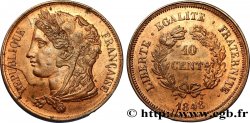fme_477582 - II REPUBLIC Médaille, Major Martin, École de la Martinière
100.00 €
Количество
Добавить в корзину

Тип Médaille, Major Martin, École de la Martinière
Дата: 1863
Монетный двор / Город: 69 - Lyon
Металл: copper
Диаметр: 50,5 mm
Ориентация осей монеты: 12 h.
Гравер DANTZELL Joseph (1805-1877)
Вес: 59,95 g.
Век: lisse + abeille CUIVRE
Пуансон: Abeille CUIVRE
Комментарии о состоянии
Présence de coups et de rayures. Légère usure sur les points hauts
Лицевая сторона
Аверс: легенда: CL. MARTIN - FONDATEUR / LABORE ET CONSTANTIA.
Аверс: описание: Tête à droite du Major Martin; signé : DANTZELL F..
Обратная сторона
Реверс: легенда: ÉCOLE DES SCIENCES ET ARTS INDUSTRIELS DE LYON / LA MARTINIERE.
Реверс: Описание: Légende en 2 lignes avec couronne de chêne, inscription gravée : DUFFE L / 1E DON / 4E MON / DIN LAVE / 1863.
Комментарий
Claude Martin, né à Lyon (France) le 4 janvier 1735 et mort à Lucknow (Inde) le 13 septembre 1800 est un soldat français de la Compagnie française des Indes orientales, puis de la Compagnie anglaise des Indes orientales (CAIO). Il amasse une grande fortune qu'il consacra à la création, après sa mort, de trois écoles à Calcutta, Lucknow et Lyon, toutes trois appelées “a Martinière”.
La Martinière fut un bref instant dans le palais Saint-Pierre (musée de peinture de Lyon) puis en 1832-1833 transférée dans l'ancien cloître des Augustins vers les Terreaux. Aujourd'hui il existe aussi La Martinière-Duchère, La Martinière-Monplaisir.
Le Major Martin légua aussi des sommes pour construire la Martinière-Lucknow (Inde) et un autre établissement à Calcutta. Mais les deux institutions "historiques" furent celles de Lyon (Augustins) et Lucknow avec la même devise : Labore et Constantia. .
La Martinière fut un bref instant dans le palais Saint-Pierre (musée de peinture de Lyon) puis en 1832-1833 transférée dans l'ancien cloître des Augustins vers les Terreaux. Aujourd'hui il existe aussi La Martinière-Duchère, La Martinière-Monplaisir.
Le Major Martin légua aussi des sommes pour construire la Martinière-Lucknow (Inde) et un autre établissement à Calcutta. Mais les deux institutions "historiques" furent celles de Lyon (Augustins) et Lucknow avec la même devise : Labore et Constantia. .








 Cообщить об ошибке
Cообщить об ошибке Распечатать страницу
Распечатать страницу Отправить мой выбор
Отправить мой выбор Задать вопрос
Задать вопрос Consign / sell
Consign / sell
 Информация
Информация



